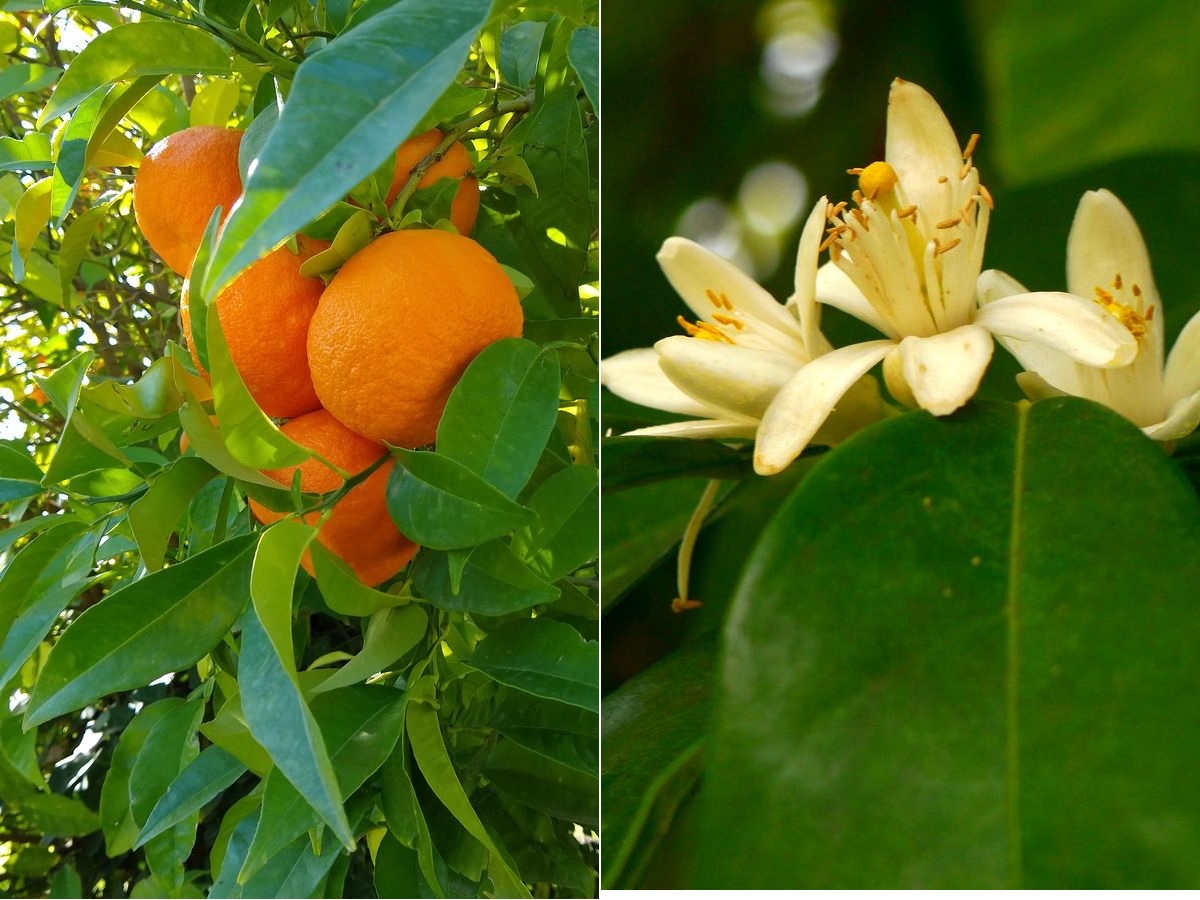Citrus × aurantium
Scientific name: Citrus × aurantium L.
Family: Rutaceae
Common name: Sour Orange, Seville Orange
The bitter orange tree is a small tree, which does not exceed 8 m in height, introduced in Europe by the Arabs from Southeast Asia. The name of the genus was already used by the Romans, and derives from the Greek Kitros. The specific epithet comes from Latin, and means golden, referring to the color of the fruits. It is a hybrid, that is, a cross between two species: Citrus maxima and C. reticulata.
The petiole of the leaves is winged; they are oval to elliptical, with a leathery texture, dark green and shiny on the upper side and dull on the underside. The flowers are white and are arranged singly or in groups of 2 or 3 in the axils of the leaves; they are very aromatic and are known as orange blossoms. The fruit is rounded, fleshy, with a rough rind and numerous glandular vesicles rich in aromatic oils. When ripe they are of the well-known orange color so characteristic of them.
They are rich in sugars, vitamins A, B, C and E, phosphorus, iron and potassium, so they are used as antiscorbutic and digestive stimulant. They are widely used for jams. From its flowers is obtained the essence 'petitgrain' used in perfumery. Its bitter bark is used in the manufacture of liquors such as Curacao. Due to its great resistance it is used as a rootstock for grafting other citrus fruits. It is a very decorative tree and very appropriate for the city. In Malaga it adorns many streets and in La Concepcion we can see it in several areas near the collection of palms and the garden of the senses.

